I grew up in a creative environment. I have been influenced by sculpture and architecture, I am drawn to dimensionality, shapes, structures and hard light from my early years. Sculptors like Giacometti, Brancusi and Alexander McQueen whose sculptural but romantic works are truly inspirational. In terms of great photographers I love the work and method of Sebastiao Salgado and Richard Avedon. Dance, Music and choreography have probably had the deepest impact in my work.

In an underwater shoot, planning is everything. Decisions on lighting, lenses, makeup and styling need to be made well before the shoot. Once in water it’s significantly more difficult and time consuming to make even the slightest modification. I make sketches in order to communicate with the models and explain what I am looking for. By law I am obliged to work with two safety divers in the water and one dive supervisor.

From a creative standpoint, there is huge creative scope because of the 360 degree shoot angle that´s only possible in water. What can be achieved will very much depend on the models’ aquatic abilities and whether or not I have worked with them before. In a commercial situation, there is a casting prior to a shoot. Just because someone is a good swimmer does not mean that they are aquatic, natural in water.

In terms of equipment, I use a Canon 5D MKIII body housed in a Seacam underwater housing. This is a state-of-the-art underwater housing custom made in Austria mainly for professional photographers. Because of the challenges with light you need fast wide lenses. I use a variety of prime and zoom lenses from Canon and Zeiss, automatic and manual, that range from 16 – 50mm. As in land-based studio shoots there are many options to light a pool, I used between 4-8 flash heads. The biggest difference with the underwater environment is that there are huge health and safety considerations.
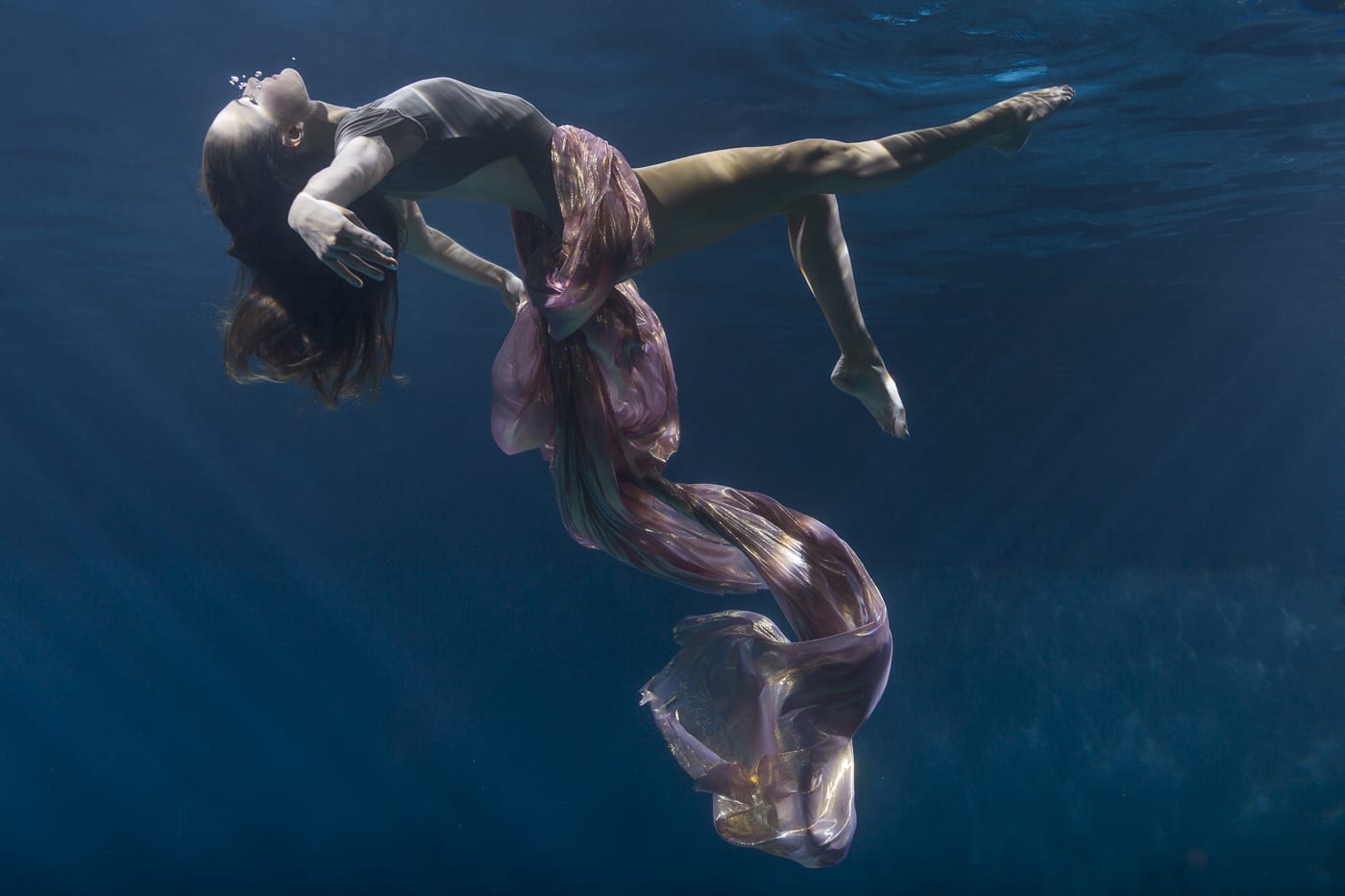
My lighting setup included, one or two underwater strobes connected to my underwater housing (Inon Z240 strobes). This is the simple part. The more complex part is lighting from outside the pool. I use 4 to 6 high-powered flash heads – (Broncolor power packs that freeze motion at 1/8000th of sec). The flash systems are connected to the mains, hence the risks. I trigger the flash from a custom-made fiber optic cable that is connected from the underwater housing to an external trigger (a Pocket wizard) that will set off the flashes. The whole lighting system needs to be signed off by a specialist lighting gaffer due to the obvious risks.
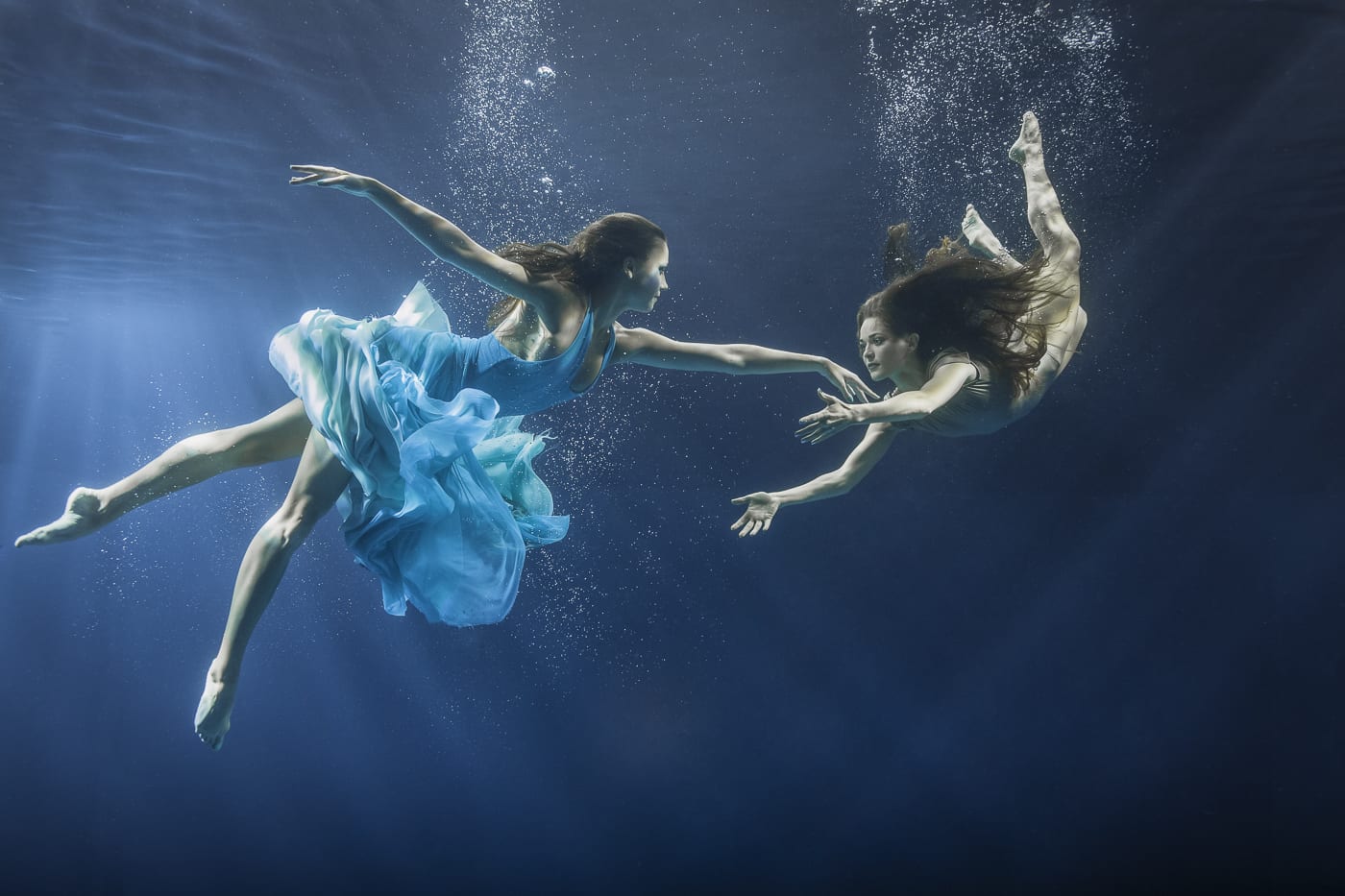
During underwater shooting several obstacles can present themselves. Among these is scatter, light and colour balance. Overcoming scatter and mastering lighting is not easy. The most important is to learn how to “edge light.” This is the process of lighting a scene with the very “edge” of the strobe. When lighting a subject from the front, one can never be very far because of how the amount of light drop off in water, wide-angle shots can be a challenge. For the more creative images in the underwater dance shoot I used a long exposure and my gaffer set up the external flash units to fire stroboscopically (pulsed illumination). This to our knowledge has not been attempted before.
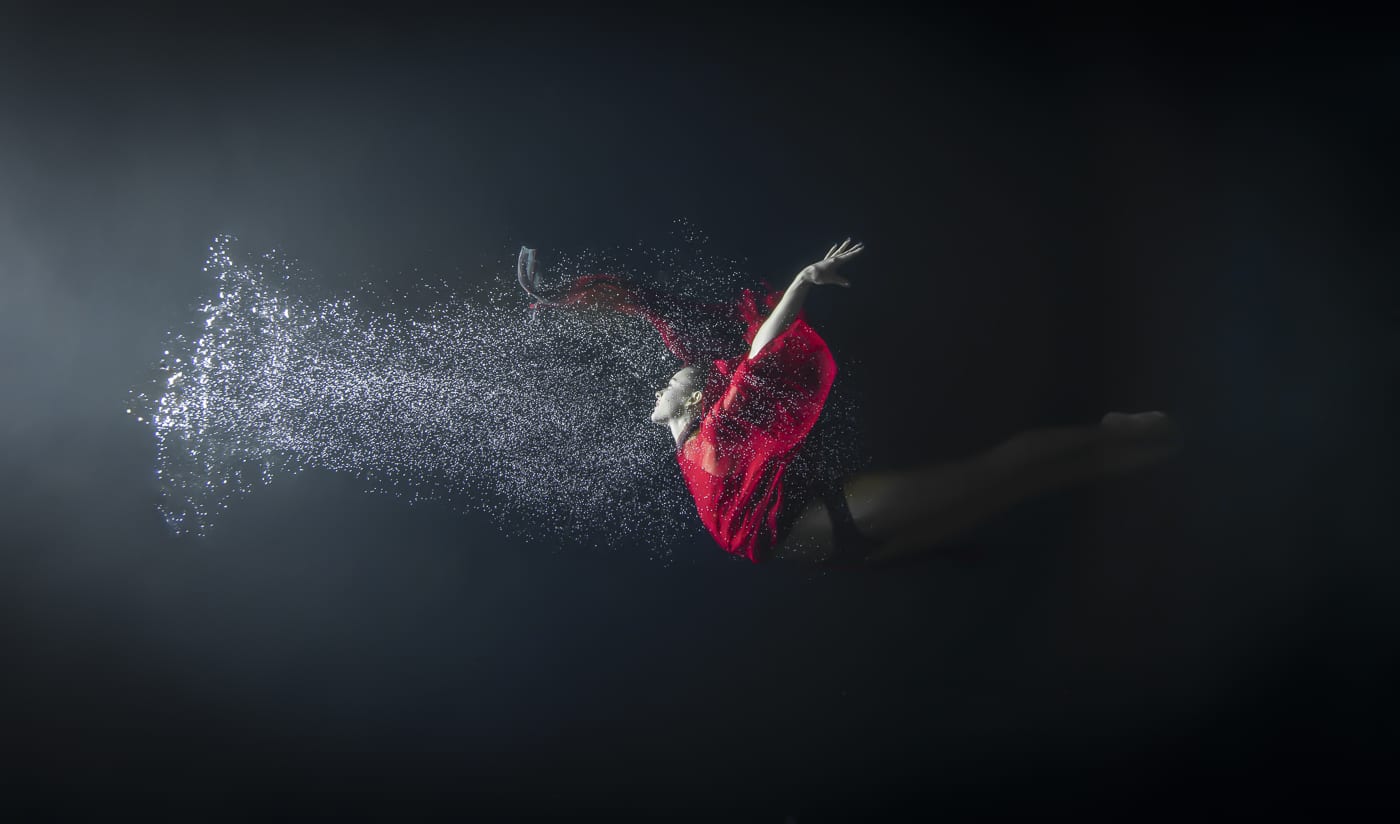
Other considerations include makeup and clothing. We use cream based makeup rather that powder based products and tones needed to be stronger than usual because water ´washes out´ colour. Hair is best gelled or tied back as it tends to get in models´ faces, particularly if they are moving a lot. As the items get wet in chlorinated water it was almost impossible to convince designers to lend us items. In the end I decided to buy the fabrics (all silks and chiffon which we tested in water beforehand). I designed the dresses and collaborated with a great seamstress to create multi-layered extra long dresses, a lot longer than would feasibly be worn on land to create a more dramatic look.
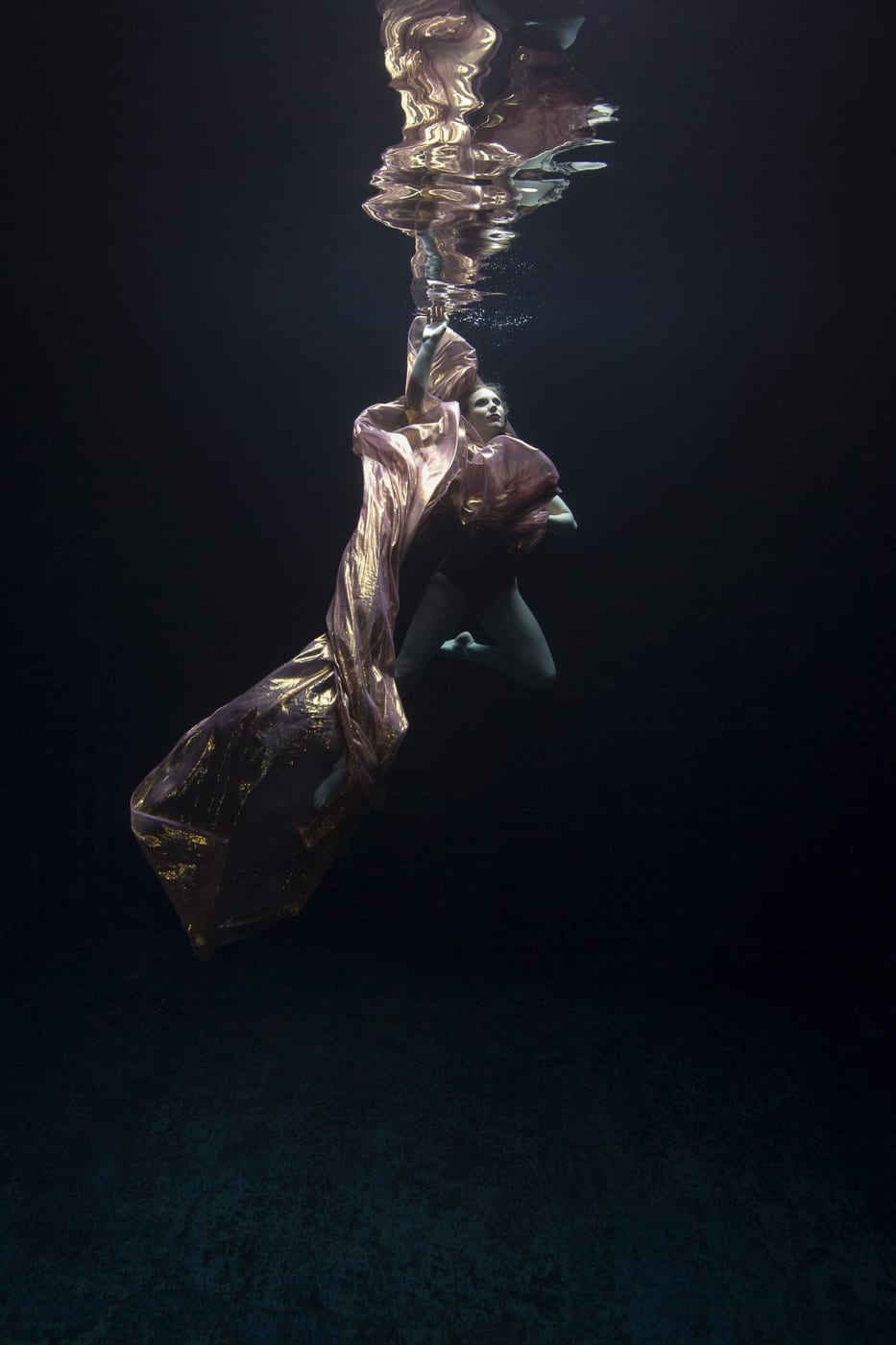
One of the most rewarding aspects of my work has undoubtedly been that of human collaboration. When working in the underwater studio an understanding of the dance vocabulary has helped me enormously. It has also meant that I probably spend less time getting a shot than otherwise. Usually I ask a dancer what they like to do or feel comfortable doing (which is what tends to look better too), I then observe them, and we work together to get somewhere interesting aesthetically. This can take any time from 5 to 30 minutes depending on how well I know them, our chemistry or how tired they are.
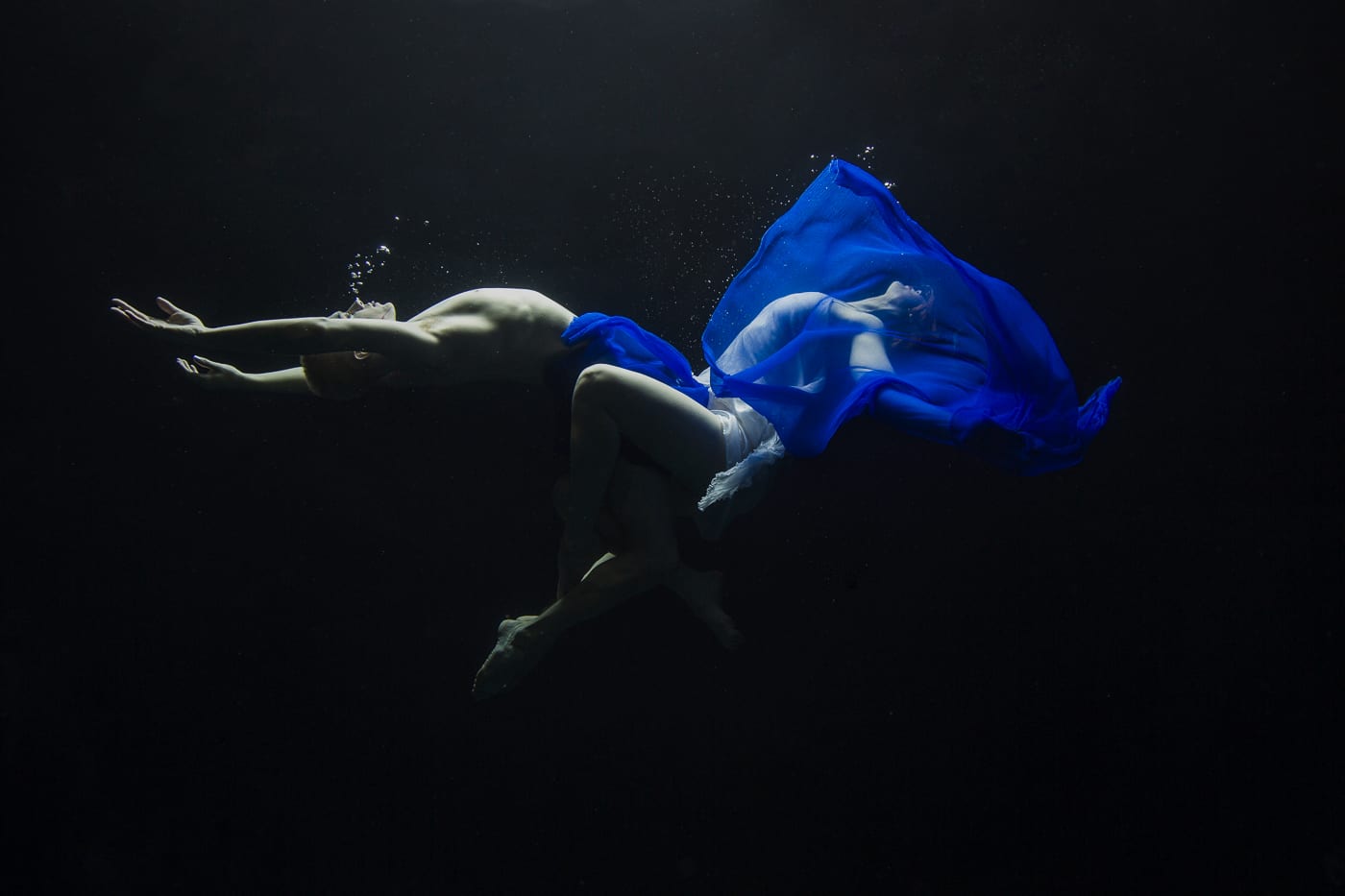
The fluidity of rhythmic movement in the underwater world is perfectly coherent. Central to the Underwater Dance project was my interest in the healing power of water and dance which I would like to explore more deeply in the future. I am in conversations with a choreographer, the artistic director of Fallen Angels Dance Company, he uses dance as a healing art for recovering addicts.

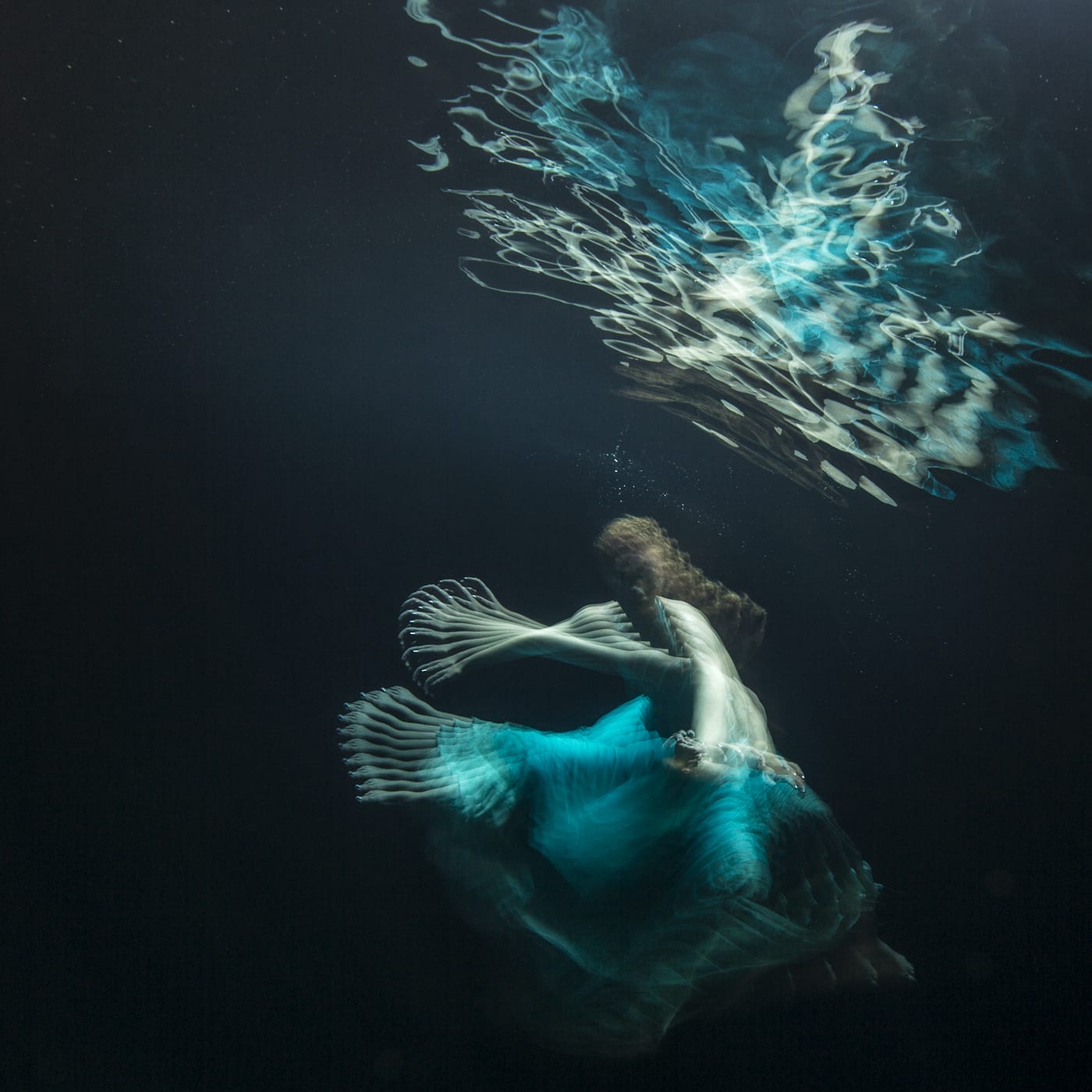
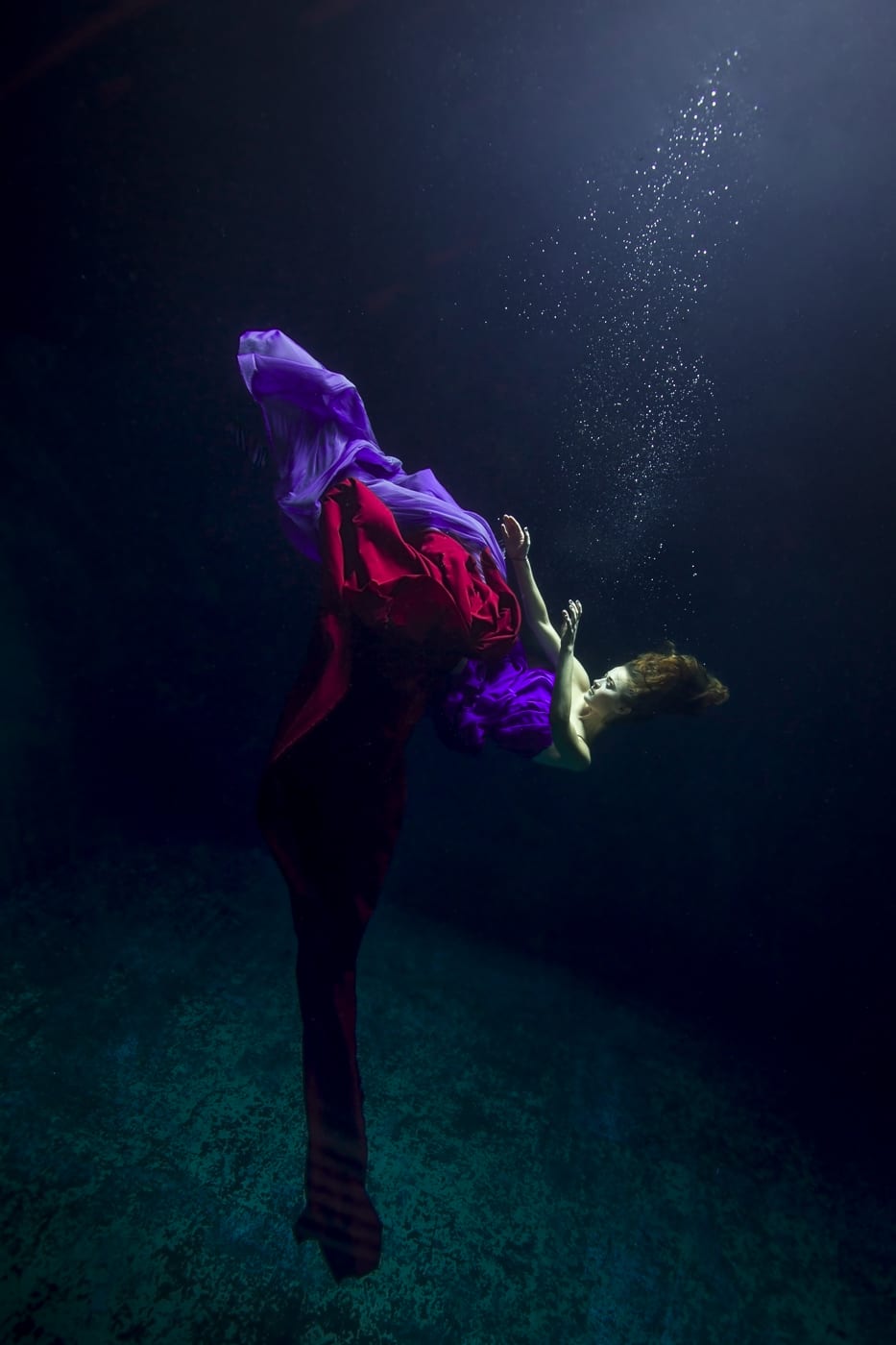
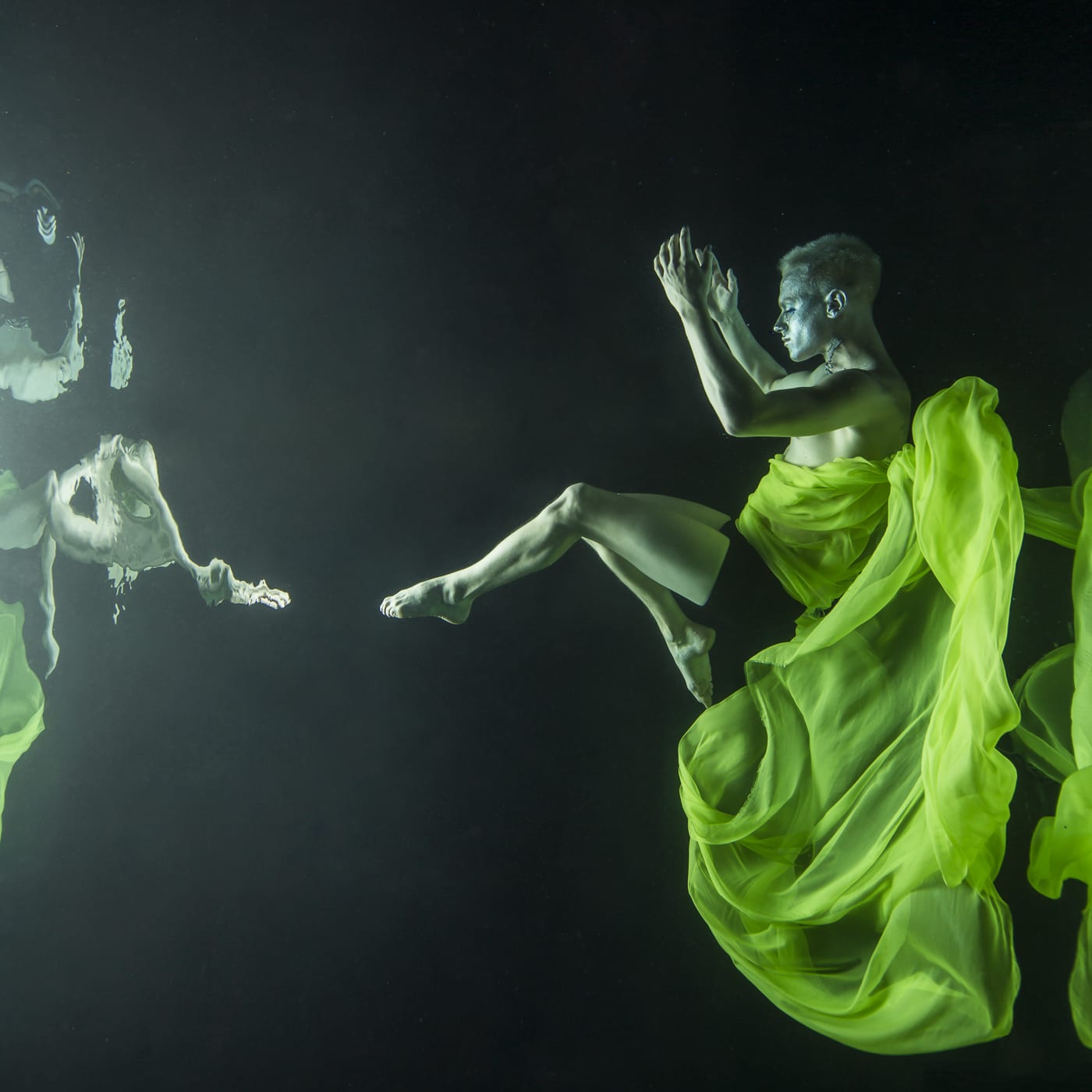
Featured video: Maya Almeida, Dancing with Neptune, video, 2013
All images © of the artist
